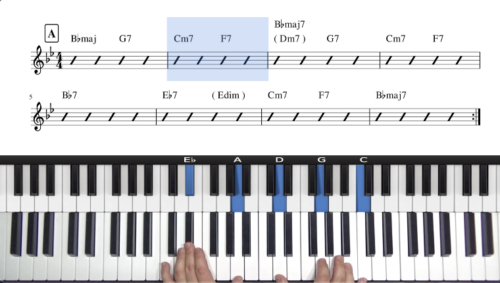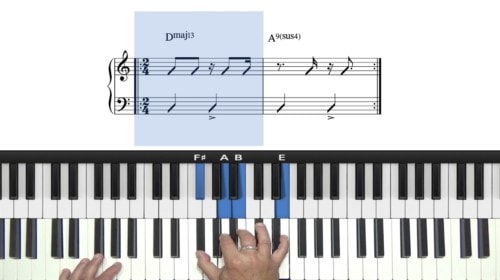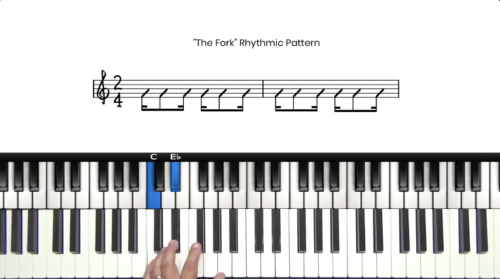Major & Minor Progressions
In this lesson we apply the choro groove to major and minor harmony.
We start with a closer study of the “fork” rhythmic concept and how this can be played on the piano with either one or two hands.
We then introduce standard jazz harmony such as the 251 progression and apply this to the choro groove in both major and minor keys.
The “Fork” Over C Major
We start by demonstrating the “fork” over a simple C Major chord. Next we explore some interesting ways to apply the choro groove whilst inverting and fragmenting the C Major chord in our right hand.
The “Fork” & The 251 Progression
Next we apply the choro groove to the 251 progression and 2516 progression.
The 251 is a common progression in choro and so we start by exploring chord voicing options for both major 251s, and minor 251s.
Jovino then demonstrates clean voice leading principles using the 2516 progression and how this can be used to create strong melodies above a basic choro groove.
Gradually Increase The Complexity
When practicing this material, start by building the “fork” over one chord. Once we are comfortable with groove and the syncopation, we can then add common chord progressions and harmonic patterns.
We can apply the “fork” rhythmic pattern to the 251 progression and then also add the VI7 chord to create a circular 2516 progression.
Once this has been mastered, we can introduce other chord movements by moving diatonically, chromatically, or simply choosing random 7th chords and stringing them together.
The end result is beautifully musical and a great hand independence drill for mastering this style.
Lesson Downloads
-
Major and Minor Progressions Lesson Notation File Type: pdf
Practice Tips
-
To understand why the "fork" is so important to master, listen to notable choro recordings and study the rhythms being used.
-
You will hear the guitar, piano, or percussion playing variations of the "fork" rhythm.
-
It takes time to build up independence while playing the fork in the left hand, and a melody in the right hand. Take it slowly and start with very simple harmony and melody.
-
Once you feel more comfortable, try playing along with choro recordings both as the accompanist and then also with right hand melody.







